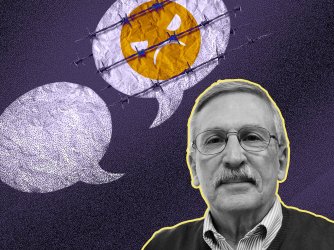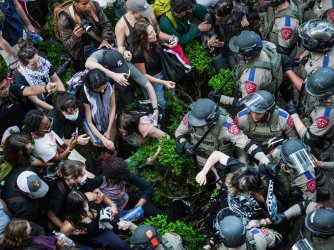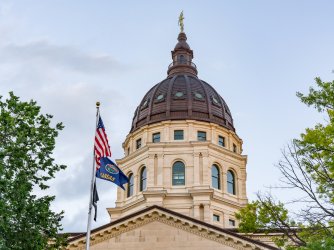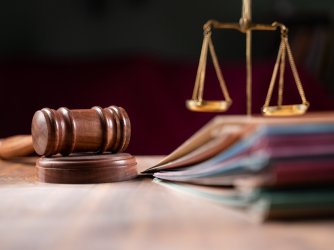Table of Contents
In Blow to Freedom of Association, Ninth Circuit Rules Against Religious Student Groups at San Diego State University
This week, the United States Court of Appeals for the Ninth Circuit dealt a serious setback to freedom of association on college campuses, ruling that San Diego State University (SDSU) did not violate the First Amendment rights of religious student groups by refusing them official recognition on account of the groups' requirement that members share the groups' religious convictions. The ruling is deeply problematic for two reasons: for the result itself, which forces religious student groups into making an untenable choice between abandoning their beliefs or simply accepting their new status as second-class campus citizens, and for the flawed rationale the Ninth Circuit relied on to justify this result.
First, let's start with the facts. The case, Alpha Delta v. Reed (.PDF), came before the Ninth Circuit on appeal by a Christian fraternity and sorority. Both the Christian student groups asked would-be members to share the group's faith. The sorority, Alpha Delta Chi, required members to regularly attend church and demonstrate "personal acceptance of Jesus Christ as Savior and Lord," while the fraternity, Alpha Gamma Omega, required members to "sincerely want to know Jesus Christ as their Lord and Savior." Alpha Gamma Omega also asked that its leadership sign a "Statement of Faith," attesting to similar religious commitments.
Because of these conditions on membership and leadership, each group was denied official recognition several times by SDSU, which claimed that the groups' membership requirements violated SDSU's non-discrimination policy. The policy states:
On-campus status will not be granted to any student organization whose application is incomplete or restricts membership or eligibility to hold appointed or elected student officer positions in the campus-recognized chapter or group on the basis of race, sex, color, age, religion, national origin, marital status, sexual orientation, physical or mental handicap, ancestry, or medical condition, except as explicitly exempted under federal law.
As the Ninth Circuit noted, official recognition at SDSU grants student groups "a number of benefits, such as university funding, use of San Diego State's name and logo, access to campus office space and meeting rooms, free publicity in school publications, and participation in various special university events," among additional access to other university resources. These benefits are very important, especially with regard to meeting space on campus.
Following repeated denial of these benefits, the fraternity and sorority brought a constitutional challenge to the non-discrimination policy. The federal district court that first heard the challenge ruled against the student groups, granting summary judgment to SDSU and the other named defendants.
In affirming the core of the lower court's ruling, the Ninth Circuit relied heavily on last summer's Supreme Court decision in Christian Legal Society v. Martinez. Torch readers will likely remember that in Martinez, the Court held that an "all comers" policy maintained by the University of California Hastings College of the Law did not violate the First Amendment rights of the school's chapter of the Christian Legal Society. Rather, the Court held that the "all comers" policy, which required all student groups to admit all students as both members and leaders regardless of their agreement (or lack thereof) with the group's stated viewpoints and desired message, was constitutionally permissible because it was both viewpoint neutral and reasonable in light of the purpose of the "limited public forum" the college had created in establishing the student organization framework.
While the facts of Alpha Delta v. Reed did not concern an "all comers" policy, the Ninth Circuit's reasoning nevertheless echoes the Supreme Court's holding in Martinez in several disappointing ways.
First, the Ninth Circuit found that because it could not discern any "material distinction between San Diego State's student organization program and the student organization program discussed in Christian Legal Society," it could safely conclude that "San Diego State's program is also a limited public forum." This was a crucial determination, as the proper type of forum analysis for the court to apply was hotly contested by the parties. While SDSU argued that the program was a limited public forum, like the program at issue in Martinez, the student groups contended that it was a "designated public forum," opened for public communication by the government. The distinction is important—indeed, it was arguably determinative of the case's outcome—because while restrictions on speech in a limited public forum need only be viewpoint neutral and "reasonable in light of the purpose served by the forum," restrictions on speech in a designated public forum are subject to "strict scrutiny" by a reviewing court and, as a result, must be "narrowly tailored to serve a compelling government interest."
That's a big difference: With a limited public forum, the reviewing court grants the government a lot of leeway to restrict speech, but that discretion vanishes when dealing with a designated public forum. So by importing Martinez's analysis with regard to the type of forum the student organization structure presents, particularly in the context of freedom of association claims, the Ninth Circuit substantially reduced the burden of justification carried by SDSU. Unfortunately, with this determination, we begin to see the lasting damage wrought by the Supreme Court's divided, 5-4 opinion in Martinez last summer. Now that appellate courts like the Ninth Circuit have Supreme Court precedent to cite for classifying student organization programs as limited public forums for purposes of freedom of association claims, the types of barriers to entry schools place on such forums can be significantly increased in scope and substance.
It's important to recall that the Supreme Court's reasoning in Martinez on this point relied on the majority's determination that student groups are seeking a "subsidy" from the government in their application for the benefits of official recognition. Writing for the majority, Justice Ginsburg found that "[a]pplication of the less-restrictive limited-public-forum analysis better accounts for the fact that Hastings, through its RSO program, is dangling the carrot of subsidy, not wielding the stick of prohibition." But as FIRE explained in our Martinez FAQ, conceiving of the student organization program as providing a "subsidy" misconstrues the relationship between the public college as government actor and the speech of student groups:
When the government opens up a forum for speech on its property, as the University of California Hastings College of the Law did by creating the student organization system on its campus, it necessarily provides its facilities and other benefits to speakers. Thinking of these benefits as "subsidies" leads to the incorrect assumption that the government is somehow sponsoring or sanctioning all speech that takes place in the forum. The Supreme Court has held that when the government opens up a forum to facilitate speech, even on its own property, that speech is still considered private and is not attributable to the government. In fact, within this government-created forum, the government may not exclude speech on the basis of viewpoint. This tenet of First Amendment law prevents the government from purposely distorting the marketplace of ideas by using its resources or spending power—in other words, by claiming that because it is providing facilities or funding, it can control the viewpoints expressed on its property. As a result, when a university creates a forum for student expression by providing facilities and funding to student organizations, the student organizations' speech is still considered private.
Former Justice Robert H. Jackson Legal Fellow Erica Goldberg has written more on this notion of "subsidizing" student organizations here.
Following the forum determination, the Ninth Circuit proceeded to analyze whether SDSU's non-discrimination policy was reasonable in light of the forum's purpose. To do so, the Ninth Circuit followed the steps it had undertaken in deciding Truth v. Kent School District, 542 F.3d 634 (9th Cir. 2008), a case involving a school district's refusal to recognize a Christian high school student group with membership requirements similar to those at issue here and in Martinez. Here, we see another unfortunate rationale emerge—namely, the importation of high school speech cases into the collegiate setting.
In Truth, the Ninth Circuit reviewed the student organization program's constitution, noting that a stated aim of the program was to "advance the school's basic pedagogical goals." Then, quoting the Supreme Court's decision in Hazelwood School District v. Kuhlmeier, 484 U.S. 260 (1988)—another high school case—the Ninth Circuit found that "part of a school's mission is to instill in students the ‘shared values of a civilized social order,' which includes instilling the value of non-discrimination." In part because of this analysis, the Ninth Circuit held that the high school's denial of recognition in Truth was constitutional. The Ninth Circuit's reasoning there was that because a high school may impart values upon students as part of the high school's in loco parentis ("in place of the parents") role, a non-discrimination rule for student organizations was safely part of this value-instilling work and thus was reasonable for the purposes of the forum.
Retracing these steps for its analysis of SDSU's forum, the Ninth Circuit reviewed SDSU's "Principles of Community" in an attempt to determine the purpose of the student organization structure at SDSU. Noting that it was "filled with references to diversity and nondiscrimination," the Ninth Circuit held that "[t]hese statements make clear that one of the intended purposes of San Diego State's student organization program is to promote diversity and nondiscrimination." This is problematic because while courts have recognized that high schools may impart certain values to students without violating constitutional norms concerning freedom of conscience, colleges play a much different role. Colleges do not act in loco parentis; college students are adults. Colleges may not engage in the same value-instilling work we allow high schools and grade schools to do. So to import Hazelwood's analysis, via Truth, to the collegiate setting is worrying. What is reasonable in light of the purposes of a high school forum may not be reasonable in light of the purposes of a college forum, given the different missions of each institution. Equating high schools and colleges in this way disregards the normative constitutional conception of colleges as "peculiarly the marketplace of ideas," and reduces the rights college students have traditionally enjoyed with regard to freedoms of expression, inquiry, association, and conscience.
To think of this in another way, imagine that SDSU's "Principles of Community" were "filled with references to civility" instead of being "filled with references to diversity and nondiscrimination." Per the Ninth Circuit's reasoning, which holds that "part of a school's mission is to instill in students the ‘shared values of a civilized social order,'" a college could claim that instilling civility in students was part of its mission—and that therefore, requiring all student organizations to include a civility statement in their constitution was both (1) reasonable in light of the purposes of the forum and (2) viewpoint neutral, since every student group desiring recognition had to adopt such a statement, regardless of any other message they may seek to advance. (See below for more on this second point.) Now, this would leave certain groups in trouble—groups that wanted to organize angry protests in support of a cause, for example. But because the Ninth Circuit has imported the in loco parentis powers enjoyed by high schools into the collegiate arena, this kind of top-down agenda-setting by a college is now permissible (at least within the Ninth Circuit's jurisdiction).
Continuing its determination of whether SDSU's non-discrimination policy is reasonable in light of the purposes of the forum, the Ninth Circuit argued that the fact student groups like the fraternity and sorority at issue here enjoy access to other means of communication—particularly through online speech—renders the forum's exclusion of these groups more "reasonable." Noting that the Supreme Court's majority opinion in Martinez made much of these "alternative avenues of communication," finding that their existence made Hastings' all-comers policy "all the more creditworthy," the Ninth Circuit held that "San Diego State's policy should be deemed as 'creditworthy' as the policy" at issue there. The Ninth Circuit's casual assumption on this point—that because students can organize online or outside of school, excluding them from official recognition is less problematic and policies negatively impacting a student group's ability to spread its preferred message are more "reasonable"—is as worrying in this instance as it was when voiced by the Supreme Court in Martinez. It's still not at all clear why either the Court or the Ninth Circuit feels so comfortable blithely accepting the exclusion of certain belief-based groups from campus simply because they believe such student groups may find other opportunities for communicating off-campus.
Having determined that SDSU's non-discrimination policy was reasonable in light of the purpose served by the forum, the Ninth Circuit needed then only to determine if it was viewpoint neutral. First, the court recognized the student group's argument about the effects of the nondiscrimination policy on certain belief-based groups:
The more limited nondiscrimination policy at issue in this case, Plaintiffs argue, discriminates on the basis of viewpoint because it allows secular belief-based discrimination while prohibiting religious belief-based discrimination. For example, under this more limited policy, a student Republican organization could permissibly exclude Democrats because the policy does not forbid discrimination on the basis of political belief, but a Christian group could not exclude a Muslim student because that would discriminate on the basis of religious belief.
But the court quickly dismissed this argument, stating that "while [it is] seemingly compelling at first glance, [it] does not survive closer scrutiny." While recognizing that the policy burdens religious groups like the Christian fraternity and sorority here, the court found that this "incidental" burden was insufficient to prove viewpoint discrimination because the policy had not been enacted with the intent or purpose of suppressing the groups' viewpoint. Determining that "Plaintiffs have put forth no evidence that San Diego State implemented its nondiscrimination policy for the purpose of suppressing Plaintiffs' viewpoint, or indeed of restricting any sort of expression at all," the Ninth Circuit found that SDSU was not denying the groups recognition on account of their viewpoint, but rather on account of their refusal to comply with the school's non-discrimination policy. This seems like a classic case of moving the goalposts: Per the Ninth Circuit, not only does viewpoint discrimination have to occur because of a challenged policy or regulation, the policy or regulation has to have been designed to discriminate by viewpoint. To recall the civility scenario discussed above, the Ninth Circuit would apparently be comfortable with a college that denied student groups recognition for refusing to sign a civility statement if such a statement had been adopted not to silence speech or to deny any particular group recognition, but rather simply out of a seemingly general desire for civility.
Having thus determined that the policy was viewpoint neutral, the Ninth Circuit's work was complete. The court did, however, remand the case back to the district court to determine whether the non-discrimination policy had been unevenly applied to different student groups, as the fraternity and sorority had introduced evidence showing that some student groups had been recognized despite maintaining membership restrictions equivalent to those the fraternity and sorority sought. ("For example, the Catholic Newman Center's application for official recognition by San Diego State provides that its officers must be 'members, in good standing, with the Catholic Church.' Further, some non-religious but officially recognized groups appear to discriminate on prohibited grounds, in contravention of the policy. For instance, the African Student Drama Association's constitution limits its leadership positions to students from Africa.") But the central issue—whether the application of the non-discrimination policy violated the student groups' First Amendment rights —had been answered, as far as the Ninth Circuit was concerned.
It's worth noting the concurring opinion's comment on the court's holding. Judge Ripple joined the majority opinion "because faithful adherence to the doctrines of stare decisis and precedent requires me to do so," but noted clearly that the question presented here is distinct from that answered by the Supreme Court in Martinez. Judge Ripple then summarized the likely effect of the court's holding on certain belief-based student groups—i.e., religious groups. It's a perceptive summary, worth quoting at length:
Under this policy, most clubs can limit their membership to those who share a common purpose or view: Vegan students, who believe that the institution is not accommodating adequately their dietary preferences, may form a student group restricted to vegans and, under the policy, gain official recognition. Clubs whose memberships are defined by issues involving "protected" categories, however, are required to welcome into their ranks and leadership those who do not share the group's perspective: Homosexual students, who have suffered discrimination or ostracism, may not both limit their membership to homosexuals and enjoy the benefits of official recognition. The policy dilutes the ability of students who fall into "protected" categories to band together for mutual support and discourse.
For many groups, the intrusive burden established by this requirement can be assuaged partially by defining the group or membership to include those who, although they do not share the dominant, immutable characteristic, otherwise sympathize with the group's views. Most groups dedicated to forwarding the rights of a "protected" group are able to couch their membership requirements in terms of shared beliefs, as opposed to shared status. Opponents of violence against women could limit their membership to all individuals dedicated to eradicating physical, mental or emotional abuse against female domestic partners. A gay, lesbian and transgender students group could limit their membership to all individuals dedicated to achieving equal political and social recognition of gay, lesbian and transgender persons.
Religious students, however, do not have this luxury-their shared beliefs coincide with their shared status. They cannot otherwise define themselves and not run afoul of the nondiscrimination policy. See Truth, 542 F.3d at 645 ("Even assuming that non-Christians would be able to comply with Truth's view of ‘Christian character, Christian speech, Christian behavior and Christian conduct,' we hold that the requirement that members possess a ‘true desire to . . . grow in a relationship with Jesus Christ' inherently excludes non-Christians."). The Catholic Newman Center cannot restrict its leadership-those who organize and lead weekly worship services-to members in good standing of the Catholic Church without violating the policy. Groups whose main purpose is to engage in the exercise of religious freedoms do not possess the same means of accommodating the heavy hand of the State.
The net result of this selective policy is therefore to marginalize in the life of the institution those activities, practices and discourses that are religiously based. While those who espouse other causes may control their membership and come together for mutual support, others, including those exercising one of our most fundamental liberties-the right to free exercise of one's religion-cannot, at least on equal terms.
Judge Ripple's analysis of what this ruling means is correct: The Ninth Circuit has sanctioned the marginalization of religious groups at public colleges and universities. As a result, we're very disappointed by the court's analysis of the student groups' claims. We'll have more on this opinion here on The Torch in the days to come.
Recent Articles
FIRE’s award-winning Newsdesk covers the free speech news you need to stay informed.

Should the First Amendment protect hate speech?
In America, hate speech is generally protected by the First Amendment. But should it be? Today's guest is out with a new book, "." W. Wat Hopkins is emeritus professor of communication at Virginia Tech, where he taught communication law and...

Here’s what students need to know about protesting on campus right now

Kansas takes a stand for intellectual freedom
